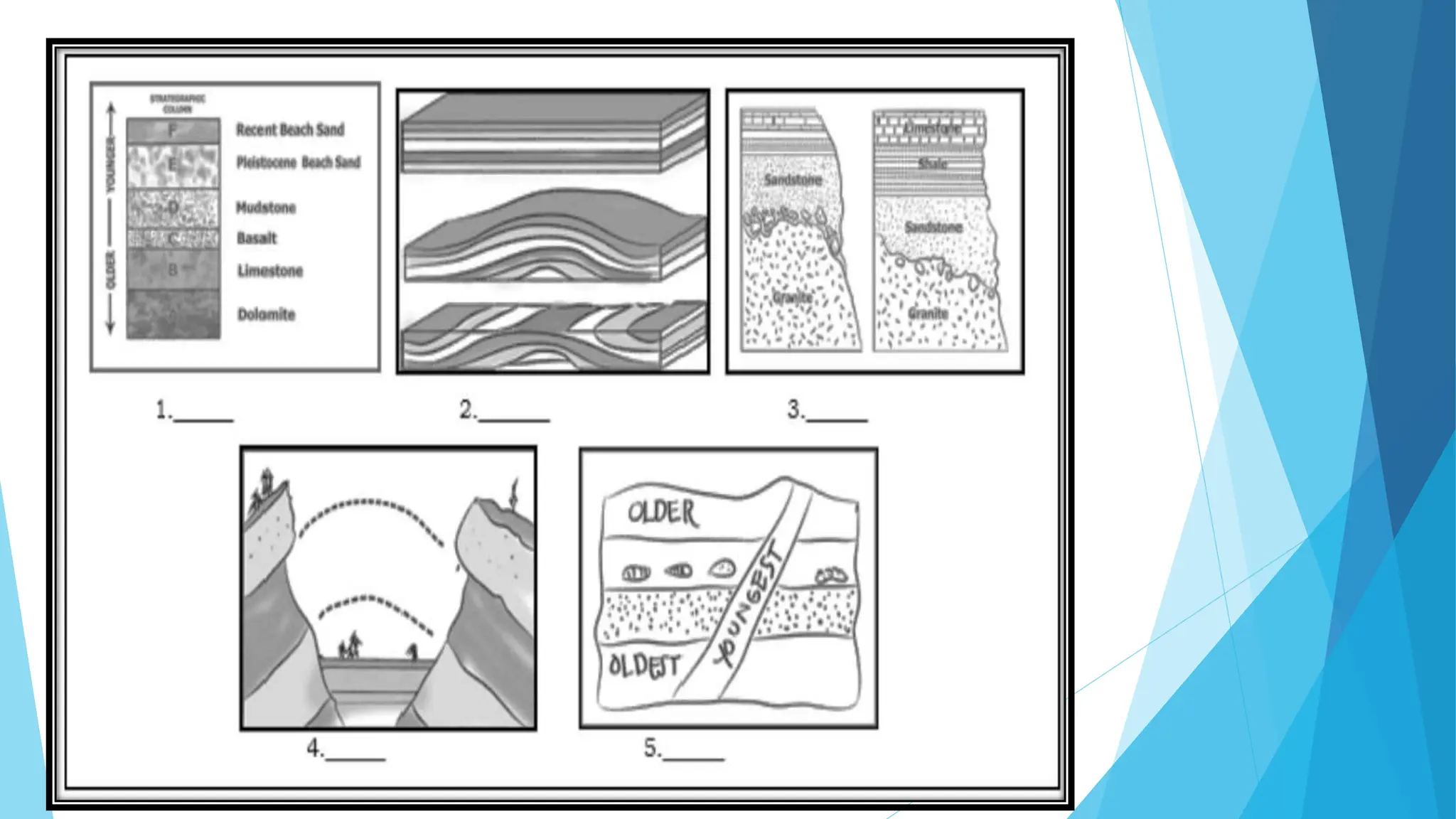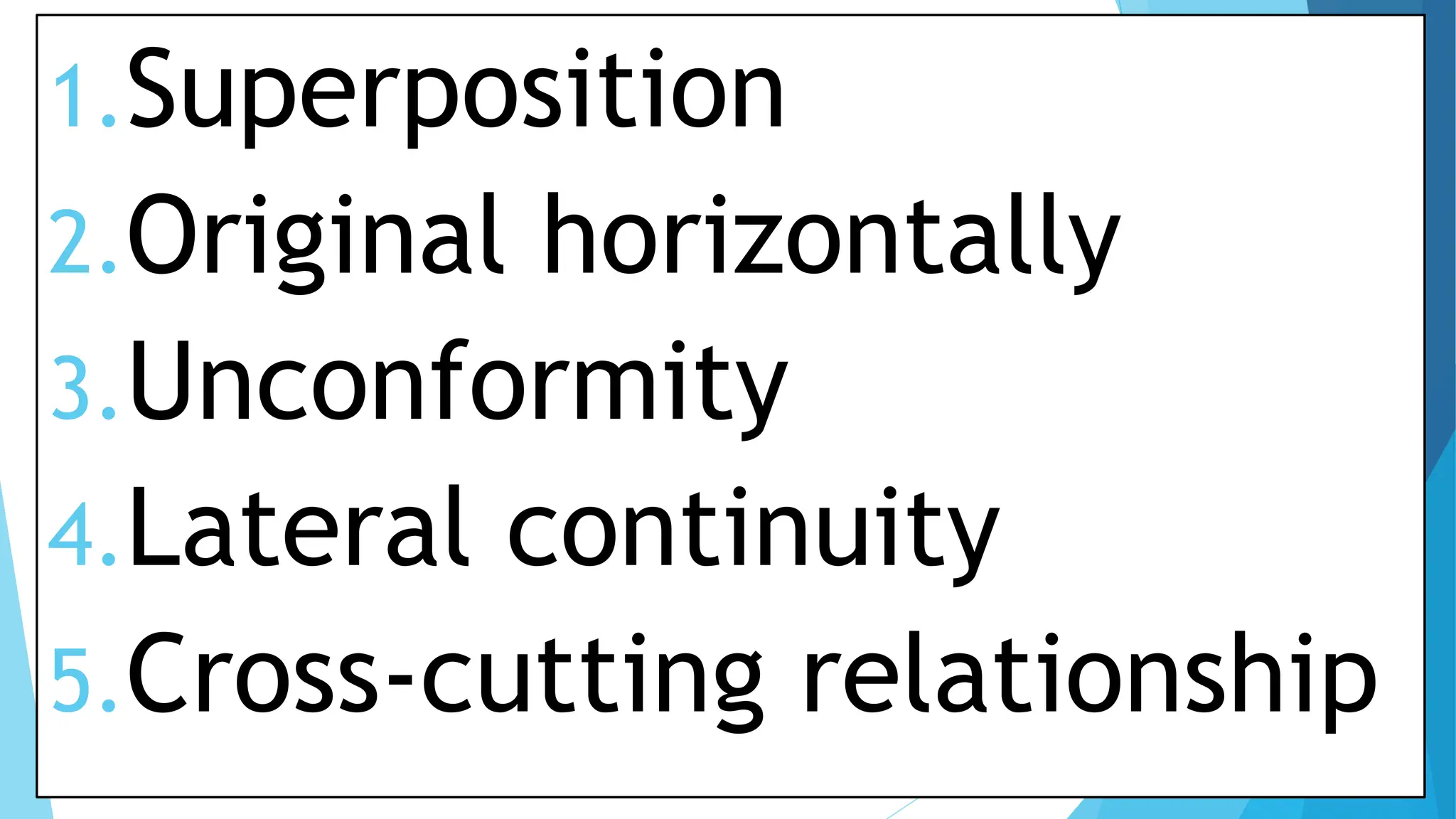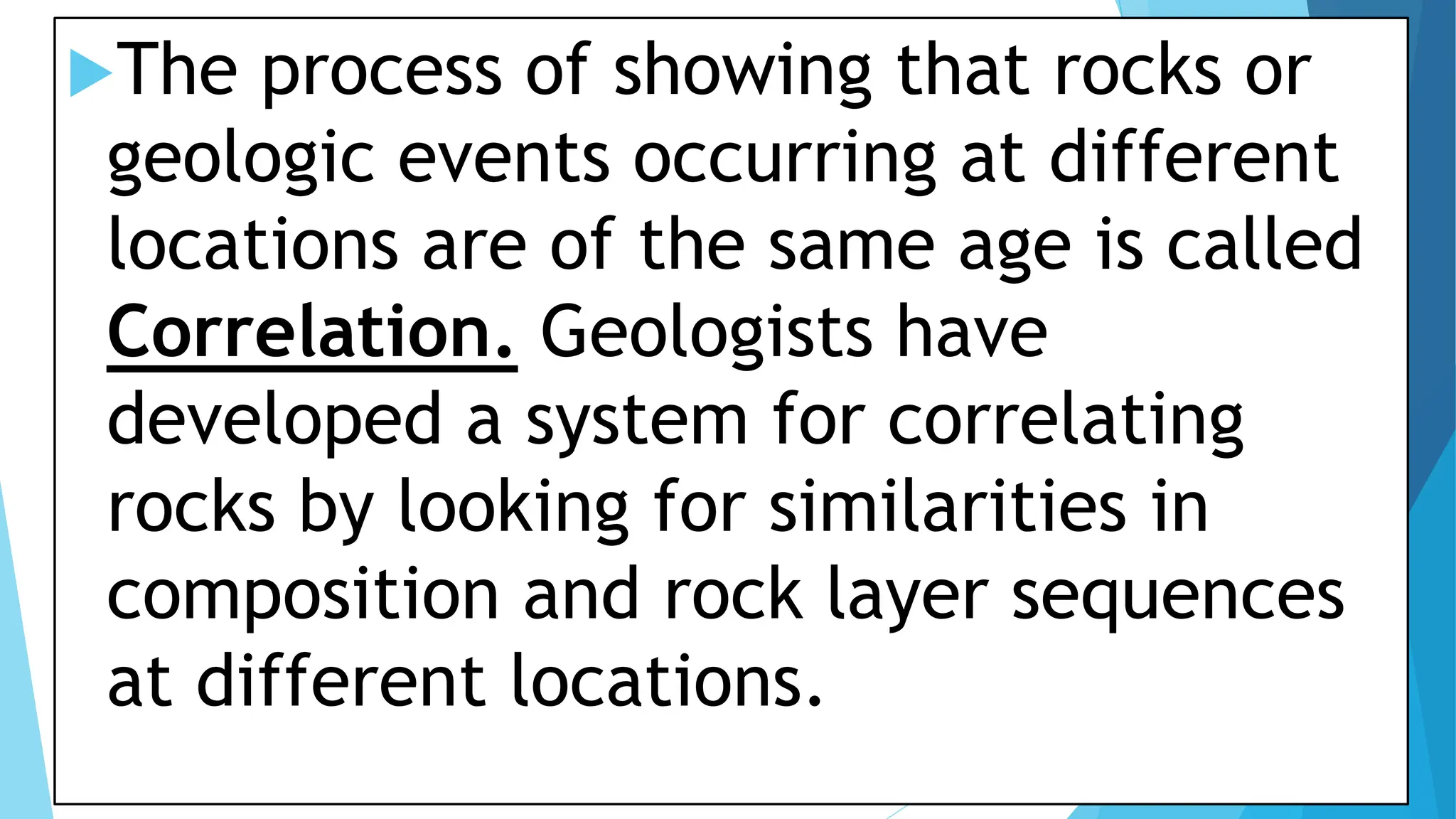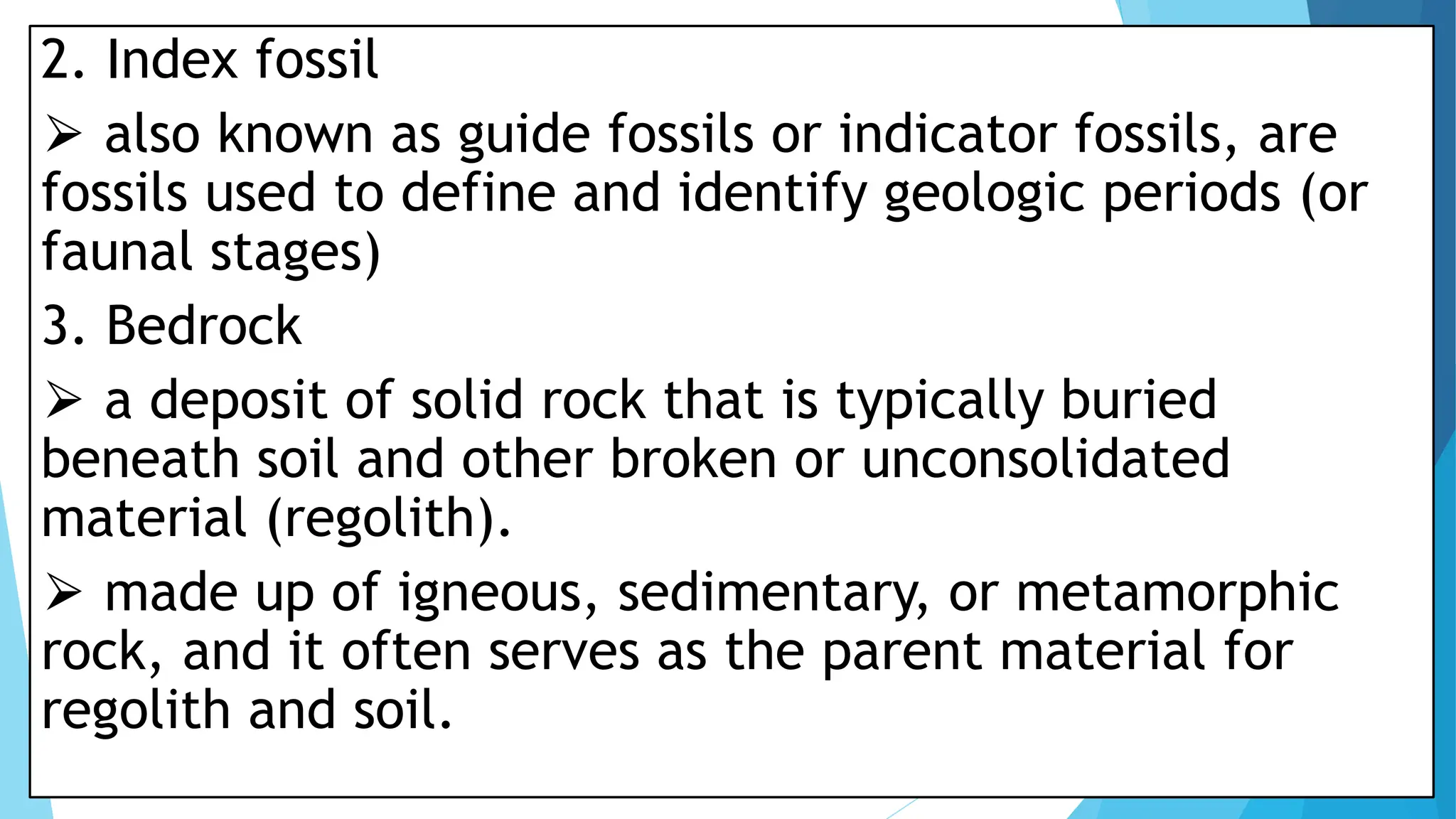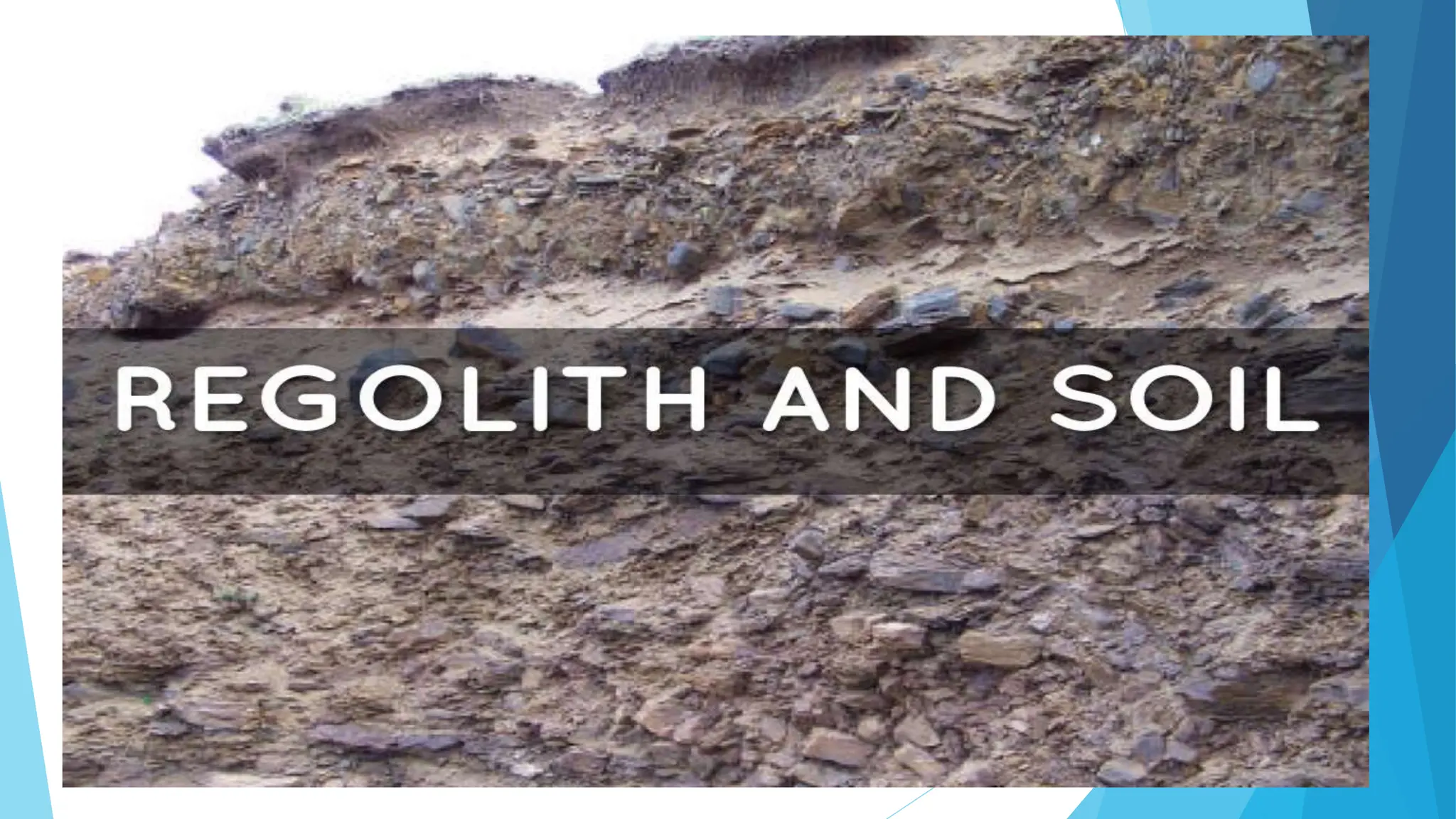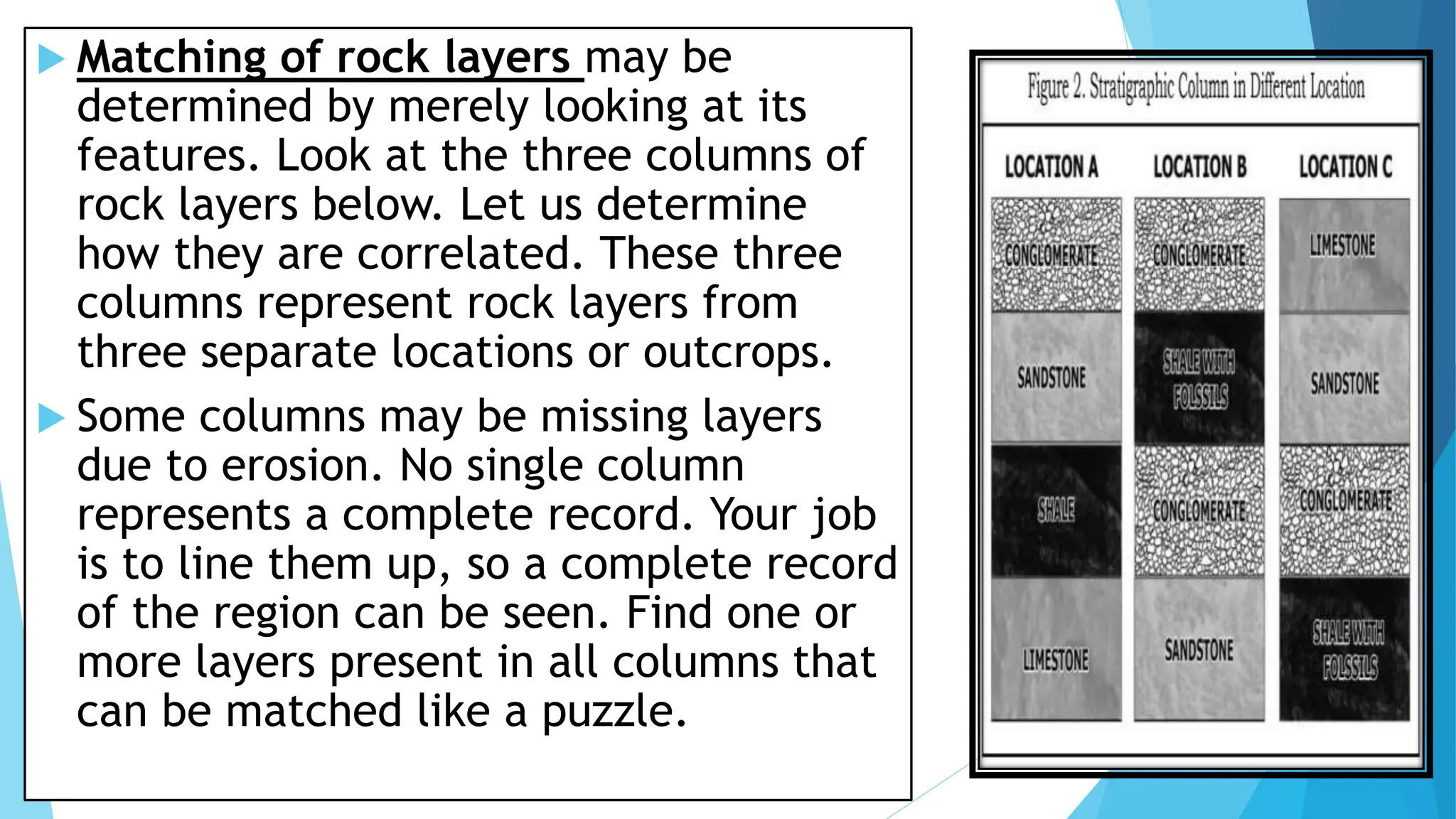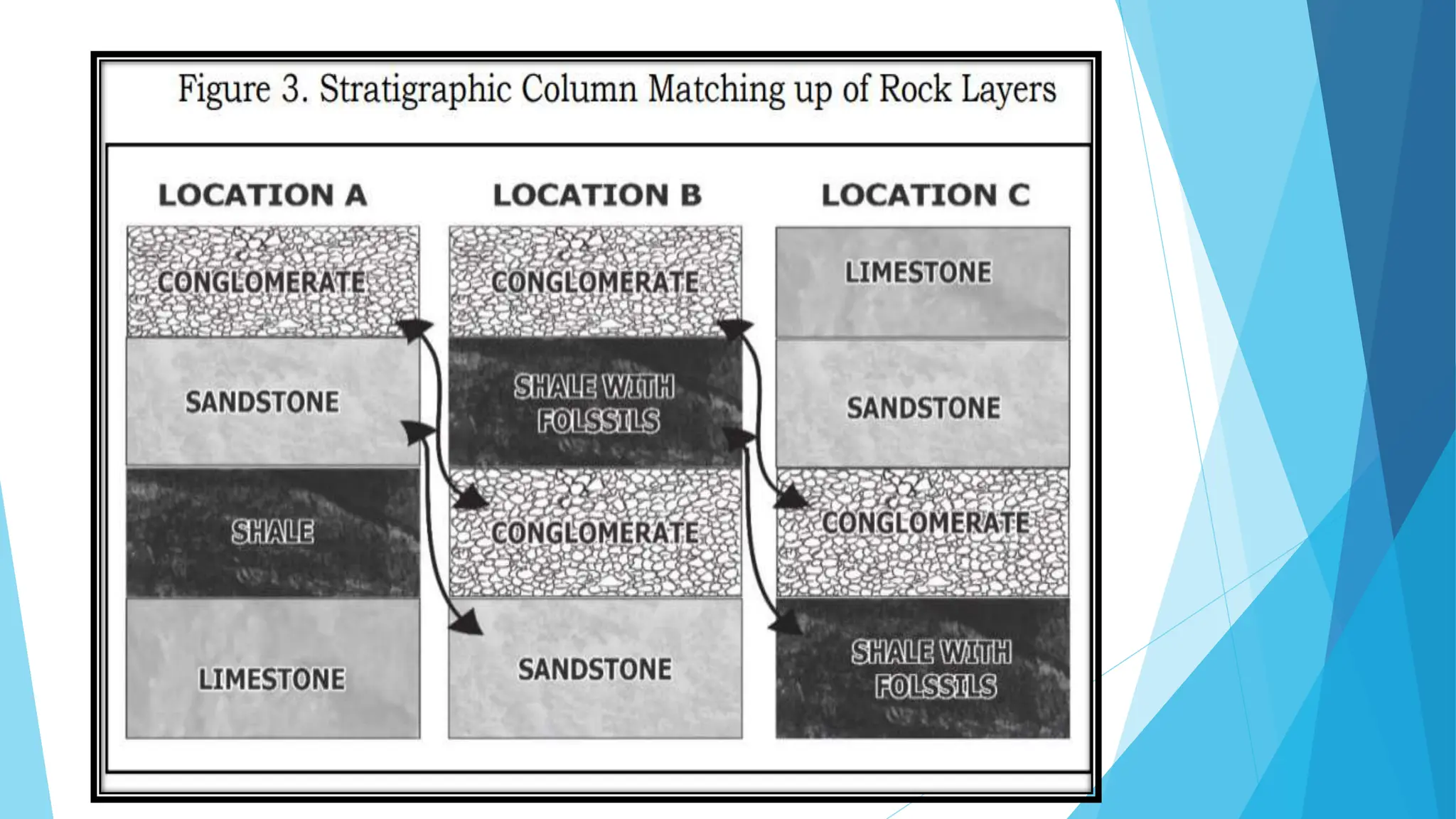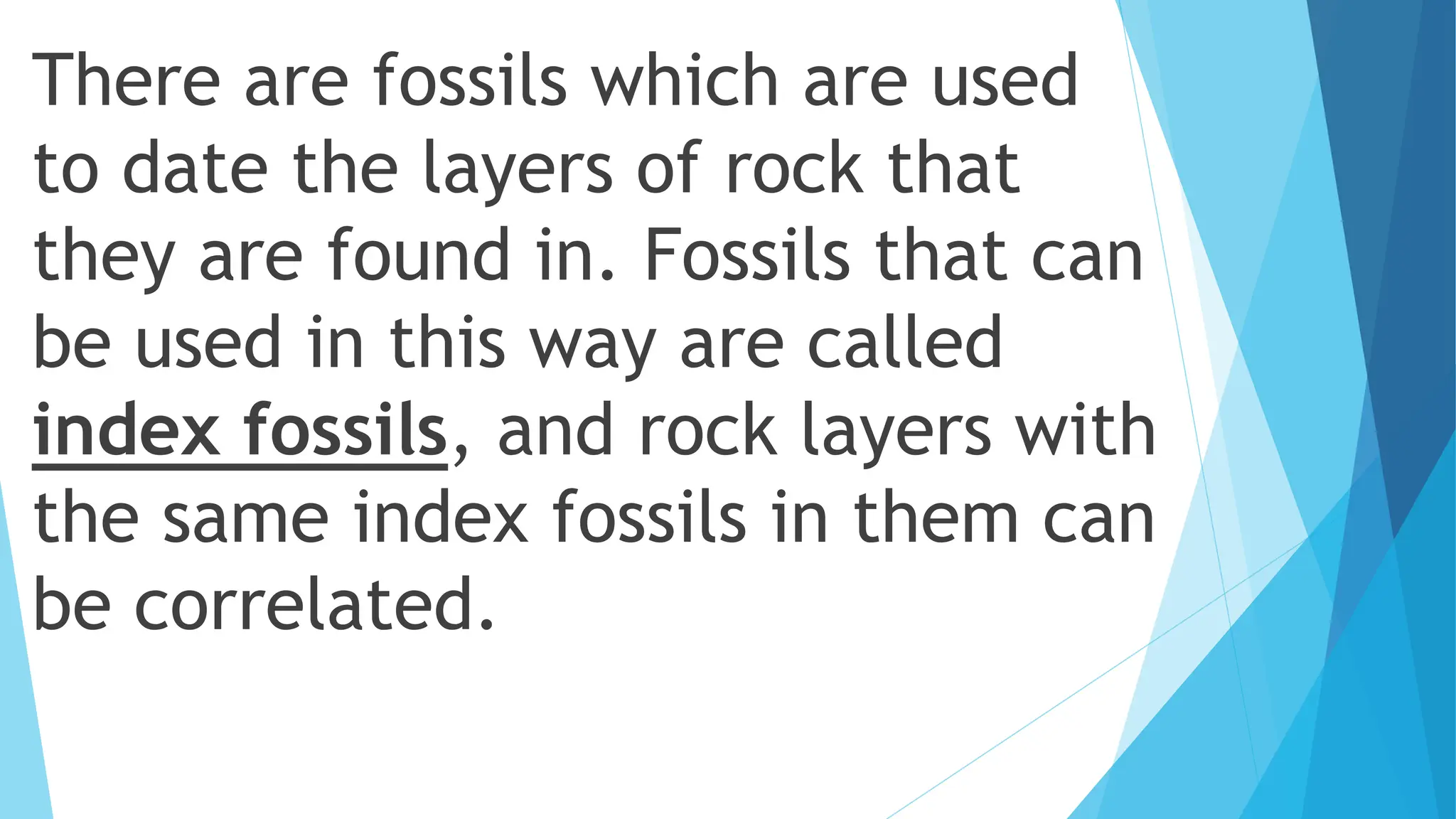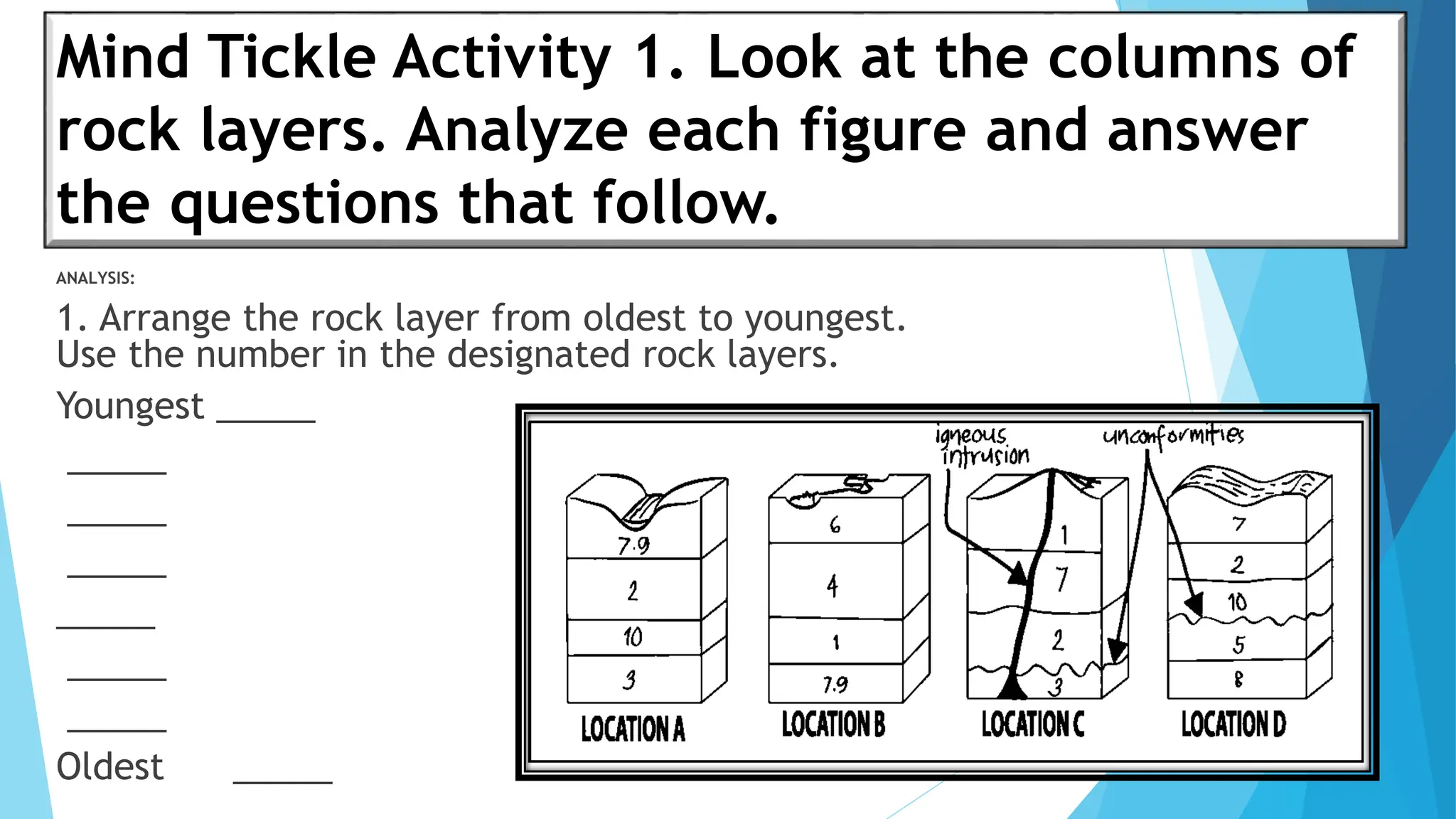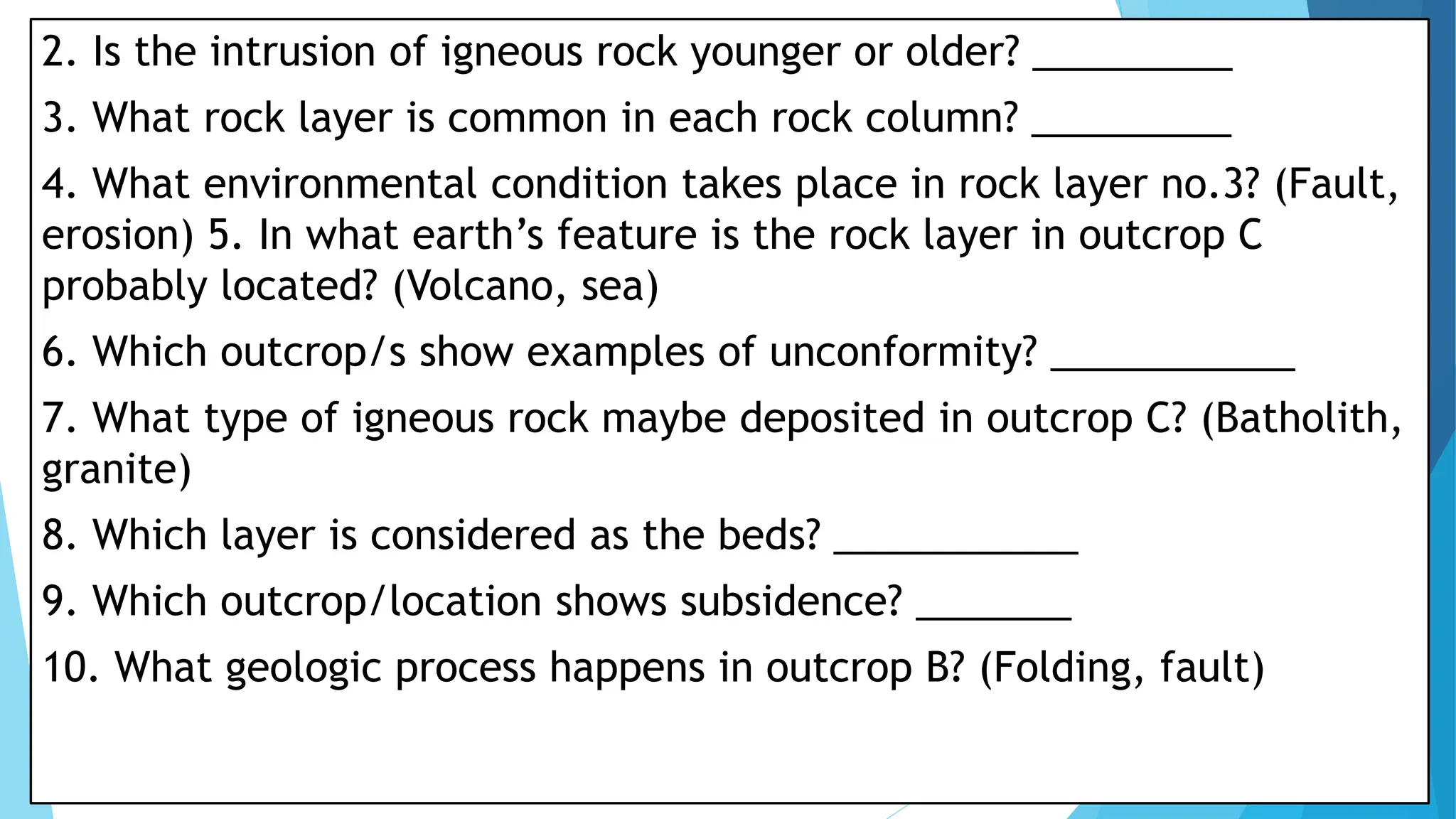Geologists correlate rock layers between different locations by matching characteristics like composition, texture, fossils, and stratigraphic position. Correlation allows geologists to reconstruct a complete geological record even when no single location preserves a full, continuous sequence of rock layers due to erosion or gaps in deposition. Key methods of correlation include comparing rock types and index fossils, and applying principles like superposition and lateral continuity to match layers between columns. Matching correlated layers establishes their relative ages and allows geologists to estimate the original geographic extent of ancient rock units.






